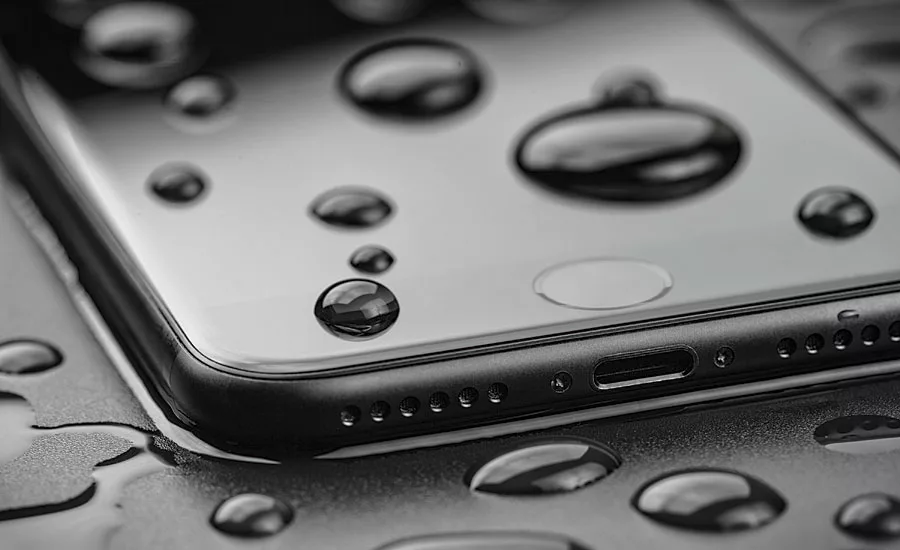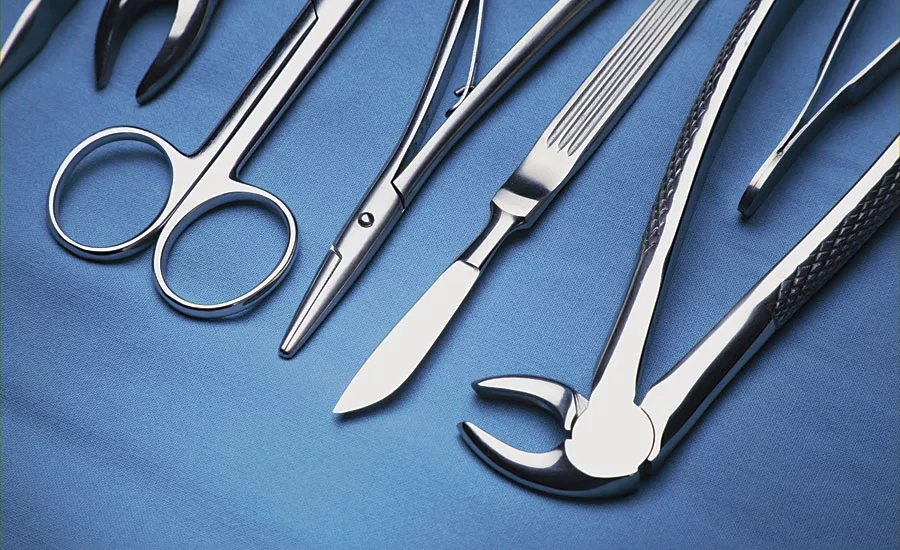Surfaces Matter in Paint and Coatings



While there have been many improvements in paints and coatings it is becoming increasingly clear that surfaces matter, and the development of new thin-film surface modification chemistries and techniques will play a significant role in future progress and breakthroughs of the coatings industry. Whether delivering hydrophobic, oleophobic or hydrophilic surface modifications, the improvements of surface layer functionality is growing to meet the needs of industries that are rapidly innovating and finding that surface modification is important to enhance performance and remain competitive.
When it comes to thin-film surface coatings, however, “one size” definitely does not fit all. They can vary from vacuum deposition to surface solution-applied techniques. There are different technology approaches to solving all waterproofing problems, including gasketing, vacuum deposition and next-generation liquids where new surface modification technologies are used to create an outer skin rather than physical gasketing.
Hydrophilic and Hydrophobic Coatings
The electronics industry, for example, not only drives miniaturization but continually experiences new needs for waterproofing. In looking for every competitive advantage, this industrty uses the latest top-of-the-line electronic assemblies, components and boards. Yesterday’s conformal coating treatments, which are not designed to be sealants against water immersion but rather humidity, have given way to hydrophobic and oleophobic waterproofing treatments for printed circuit boards made of a variety of materials including metals, metal oxides, polymers and ceramics. These techniques can involve a combination of gasketing and vacuum deposition or solution-based processes that are not batch process dependent.
The demand for waterproofing electronic devices has created a very large market, and is being led by the smartphone industry where liquid damage is a huge issue. According to research from International Data Corporation (IDC), more than 900,00 smartphones are damaged by liquids every day globally. IDC’s research revealed that liquid damage is the second-largest cause of damaged smartphones, with the impact estimated to be worth nearly $100 billion each year. The analyst firm claims that by 2020, more than 1.7 billion smartphones will be shipped at a market value of $398 billion, with the problem of liquid damage only becoming more widespread if not properly and permanently addressed.
However, the need for waterproofing PCB’s goes far beyond smartphones. There has been tremendous interest in thin-film hydrophobic technologies by producers of tablets, IoT devices, appliances and even automotive component manufacturers.
Another market segment that is adopting new surface modification technologies in interesting ways is the medical device industry. State-of-the-art health and medical instruments are manufactured from materials that can cause inflammatory responses or don’t allow fluids to flow smoothly over surfaces, causing inconsistencies in treatments. Hydrophilic and hydrophobic coating formulations for the medical device industry help minimize complications.
The explosion in sophistication and application of medical devices makes it possible to help improve human health in ways that were unthinkable just a few years ago. Over the last decade, this unprecedented growth has resulted in the development of state-of-the-art health and medical instruments that range from simple tongue depressors to complex programmable pacemakers with microchip technology and laser surgical devices.
These devices are all used in the treatment, mitigation, diagnosis and/or prevention of diseases and abnormal physical conditions, but all are manufactured from unnatural materials to which human bodies have a natural resistance. Humans have a propensity to create poor biological interactions to devices and the tools that deliver devices made from silicone or latex rubber, solid steel or nitinol core wires, and other nonbiological materials. The insertion of foreign materials can create pain and discomfort for the patient and raise the risk of damage, infections and even more life-threatening ailments. Complications are a major concern among healthcare professionals, as well as patients, and many view the risk management process as the most critical for successful medical product design and development. Fueled by increasing awareness about healthcare-acquired infections, the door has been opened for hydrophilic and hydrophobic coating formulations for the medical device industry to help minimize complications.
Treatments for medical use are quite extensive. Repellency treatments are being used on metal cutting tools to repel blood and tissues. Certain metal cleaning and coating treatments chemically bond to metal surfaces and are nontoxic. As well, operating theater windows can be treated for repellency. Blood and tissues are easily rinsed away.
Hydrophilic treatments are used in coating plastics for microfluidic channels and plates for diagnostics purposes. Aqueous biological fluids spread easily and travel on plastics much easier with hydrophilic treatments. Hydrophilic treatments drastically reduce surface tension on polymeric surfaces like polypropylene, polycarbonate, cyclic olefin copolymer, PET, PETG, and polyimide, polyurethane, PVC, glass, metals and fabrics.
Hydrophilic treatments also repel proteins, DNA and other biological fluids. They can be used on several surfaces including transition metal complexates with a nontoxic hydrophilic polymer that bonds water to surfaces and prevents other materials from adsorbing in the surfaces.
Current and potential application of coatings in the healthcare industry is enormous and, until now, has been relatively untapped. Medical applications present an interesting set of rigid conditions to meet because safety is the industry’s primary focus. Producing efficient, cost-effective and functional devices is difficult enough, but when paired with the sanitary and biocompatibility considerations necessary for functional medical equipment and medical devices, coatings play an instrumental role.
Superhydrophobic and Oleophobic Coatings
There are other examples of specialized applications where surfaces matter, one such being guitar strings. Taking advantage of superhydrophobic and oleophobic coatings, guitar strings adopt durability-enhancing properties such as from oils from fingers. Many of Ernie Ball’s strings, the global leader in the guitar string market, are coated with a nanocoating to stop oil and grease from fingers deadening sounds produced from the strings over time. As a result, artists as diverse as Eric Clapton, Slash, Keith Richards, John Meyer and many others enjoy the crispness of fresh strings with unparalleled durability. A blogger recently noted, “Ernie Ball Paradigm guitar strings are very sexy with their Aculon coatings.”
Nanoscale repellency coatings technologies are also applicable for 3D movie screens, which have a texture that is so delicate it cannot be cleaned using conventional methods. By applying a nanoscale treatment to the surface, the buildup of popcorn oils is prevented while having no impact on the light reflectance.
The oil and gas industry also benefits from nanoscale surface modification technologies. In this industry, antifouling coatings enhance the cleanliness of sapphire sensors or prevent buildup of contaminants on stainless steel components. Use of self-assembled monolayer of phosphonates” (SAMP), which are less than 5 nanometers thick, do a stellar job of protecting stainless steel from buildup of paraffins and asphaltenes in oil storage tanks, refinery applications and even down-well umbilicals. Down-hole applications for oil wells are also candidates for surface modification. One of the challenges with oil production is when the rate of flow is reduced due to water blockages down well as the surface tension of water causes it to block the capillaries of the rock formation and as such reduce oil flow back. By treating the sand and rock formation, the water flows more easily, and enhancements to oil flow rates of up to 40% oil flow have been demonstrated.
Conclusion
As can be seen across many industries, whether electronics, medical, oil and gas and multiple consumer industries, surfaces are key to performance. As new tools and technologies are developed, surface scientists will continue to innovate and create new formulations to meet the needs of those new developments. Many of the problems being solved today were not an issue 10 years ago, but with the ever-increasing pace of innovation and demands for better product performance, the rate of development of surface modification techniques is keeping pace. Surfaces matter!
Looking for a reprint of this article?
From high-res PDFs to custom plaques, order your copy today!






